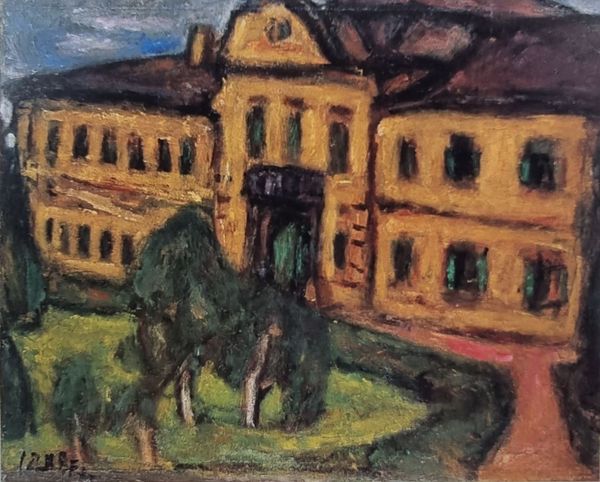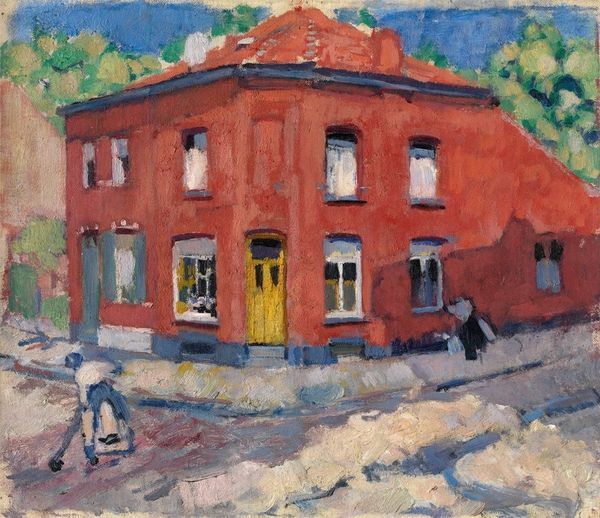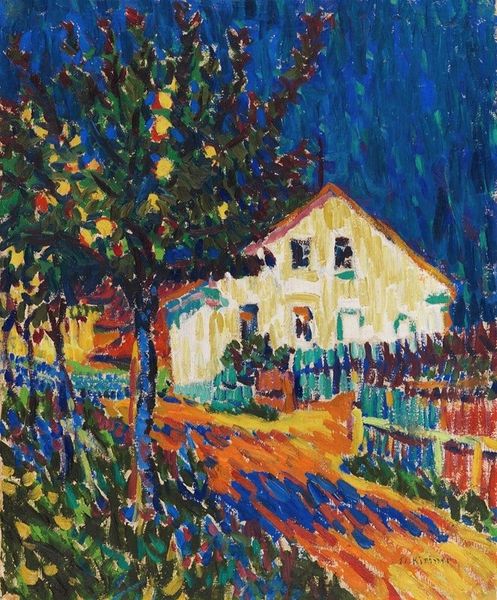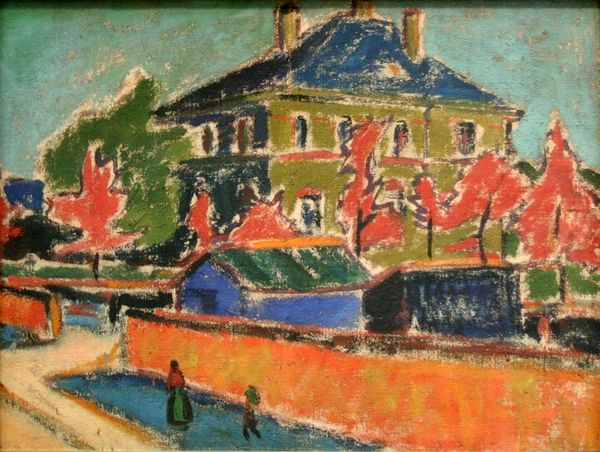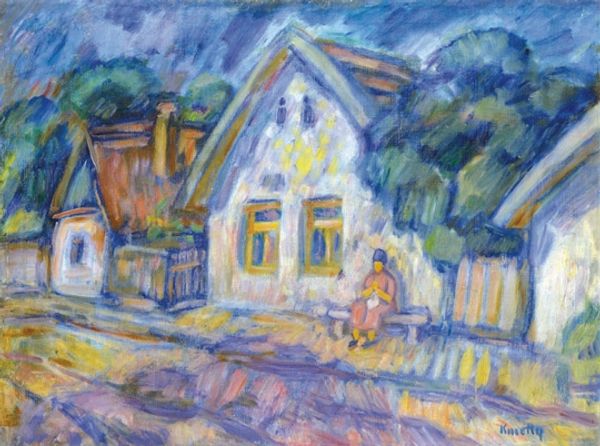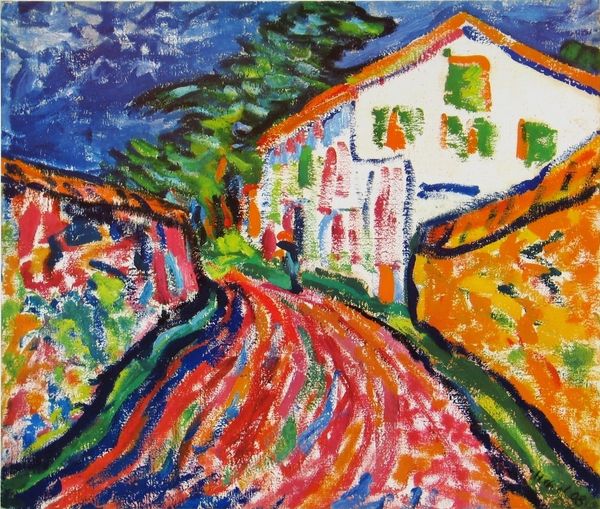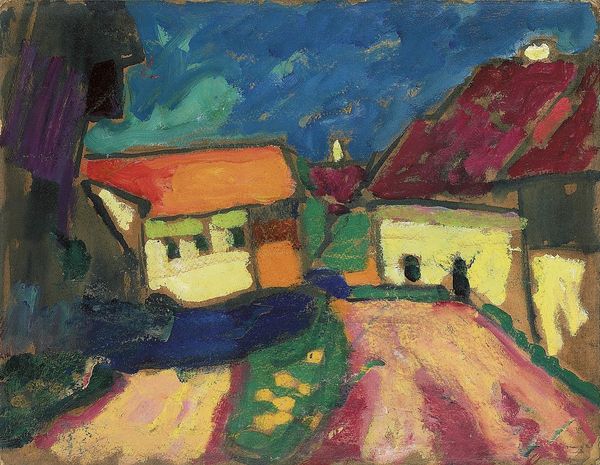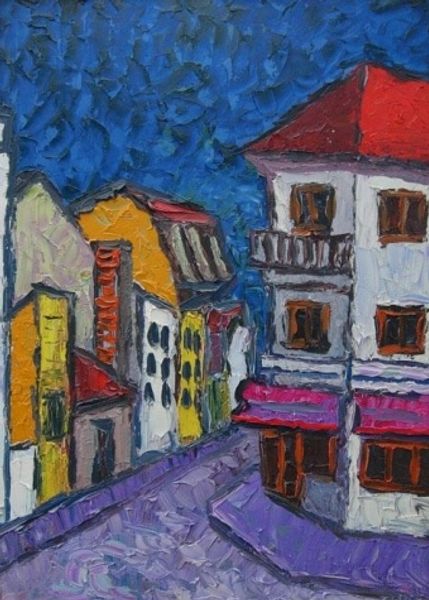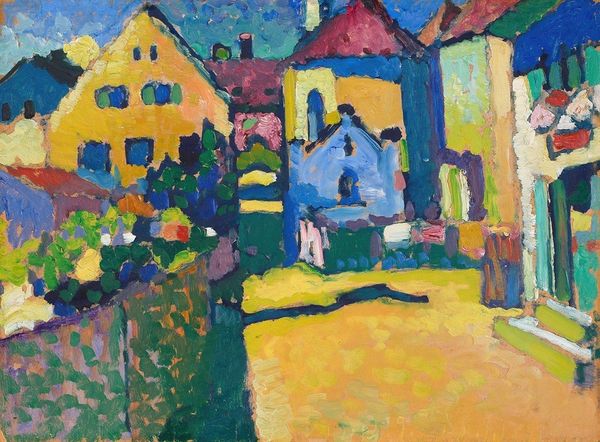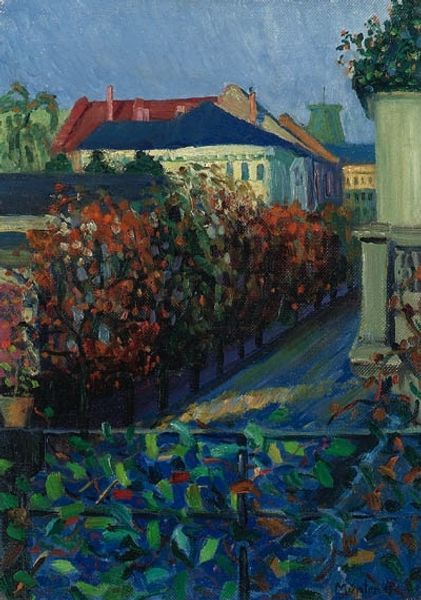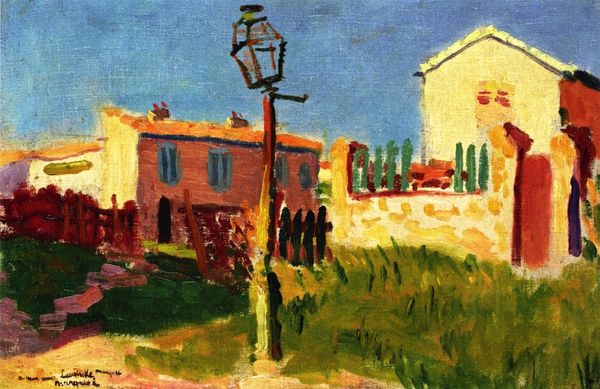
oil-paint
#
oil-paint
#
landscape
#
oil painting
#
expressionism
#
cityscape
#
expressionist
Copyright: Public Domain: Artvee
Curator: Looking at Ernst Ludwig Kirchner's "Houses in Dresden," I'm immediately struck by the vibrant, almost unsettling energy. The colors feel intentionally dissonant. Editor: Yes, it’s undeniably impactful. The rough application of the oil paint draws attention to the physical act of its creation, and sets the mood and, for me, that is a type of modern alienation. The materials become very important here. Curator: Absolutely. Considering the sociopolitical climate in Germany during the rise of Expressionism, and looking through a lens of gender and social identity, the discordant colors and deliberately crude brushwork communicate a sense of unease. It critiques bourgeois comfort in the face of brewing social unrest and war, and speaks also about societal structures imposed on an oppressed and misrepresented queer community that Kirchner was close to. Editor: Right, and you can feel that unease in the materiality itself, in how it has been physically formed. The lack of refined finish directs us towards the production, and, in doing so, emphasizes its crafted nature and even labor. Look at the impasto strokes, seemingly rapidly applied, hinting perhaps at the quickening pace of industrial and societal change in pre-war Germany. Curator: Exactly. It challenges conventional ideas around representation, refusing a picturesque view of Dresden, particularly at a time of extreme cultural transformation and anxieties surrounding industrial progress and gender roles. Notice how the composition uses color to disrupt the expected harmonies and therefore a more accepted sense of self. The emotional resonance stems not just from what's depicted, but also from this deliberate application of potentially destabilizing social themes, pushing at the restraints of accepted norms of visual representation. Editor: The lack of blending creates a sense of rawness that is very modern, and reminds us that this isn’t just some picture, it is physical labor that had both monetary and emotional value and effort attached to its creation. Even something that looks crude carries a huge material weight. It's hard not to wonder about Kirchner's artistic intentions and material considerations while he was applying these broad brushstrokes in his studio. Curator: Reflecting on Kirchner’s “Houses in Dresden” it has made me more conscious of how crucial art can be in questioning and challenging perceived reality. It speaks about identities marginalized and the societal pressures surrounding identity that art can unpack for a diverse range of perspectives. Editor: It’s pushed me to look even more deeply into what went into its production, the real material circumstances. Even at a glance, that visible effort and materiality communicates so much, echoing beyond its time and making one stop to think about labor and social life.
Comments
No comments
Be the first to comment and join the conversation on the ultimate creative platform.
